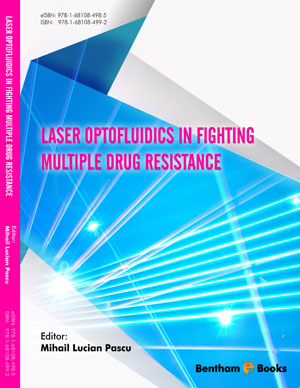Abstract
Photosensitive phenothiazine drugs subjected to UV laser radiation exhibit alteration of the initial parental compounds and provide newly generated photoproducts with possible bacteriostatic, bactericidal and antitumor effects. These new compounds with enhanced properties may also have outstanding wetting abilities when applied on fabrics of interest for applications, in order to develop new tools for drug delivery to patients, biological targets, or even surfaces of manmade equipment, constructions, or space ships. However, prior to biomedical applications, surface properties including contact angle measurements, require more thorough studies since such properties may control the delivery process of medicines to target tissues. This chapter shows the results obtained on the wettability of cotton, polyester and Parafilm M surfaces by laser irradiated phenothiazine aqueous solutions. In the present study, pendant chlorpromazine, promazine and promethazine droplets have been generated, then by simply bringing them into contact with the respective surfaces, detachment from a vertical capillary took place thus achieving the formation of sessile droplets. Results have evidenced the fact that some of the implemented drugs, containing the photoproducts obtained by prolonged exposure to laser radiation of the parent compounds, indicated better wetting abilities compared to their unexposed control, hence providing new promising perspectives.
Keywords: Absorption, Adsorption, Advancing contact angle, Chlorpromazine, Contact angle hysteresis, Cotton, Non-antibiotics, Parafilm M, PES, Polyester, Promazine, Promethazine, Receding contact angle, Sessile droplet, Surface tension, Surface wettability, UV laser, Wetting properties.






















